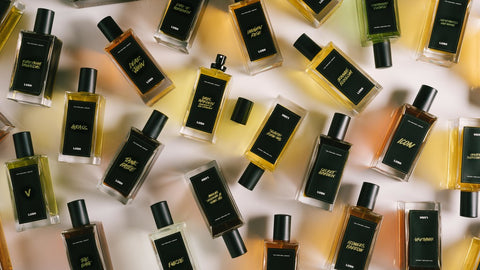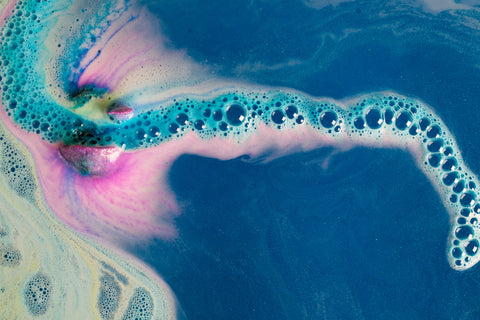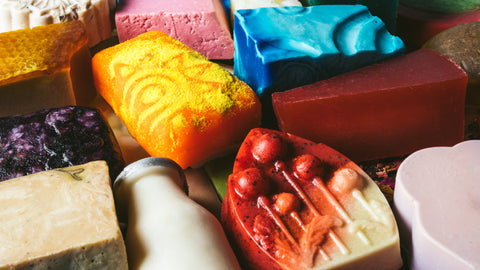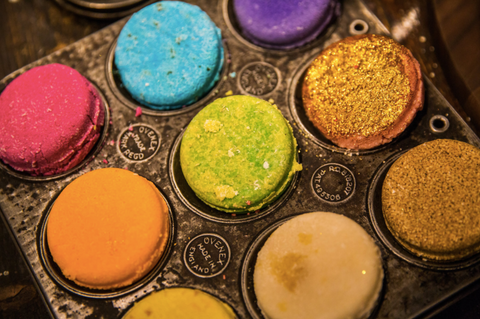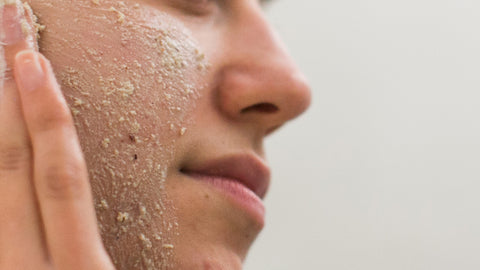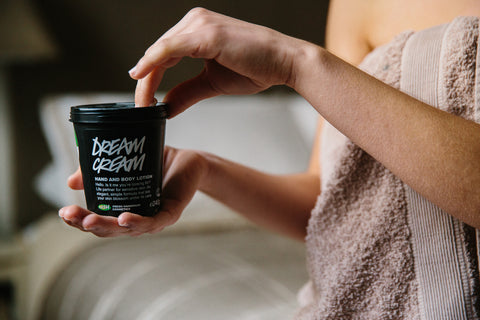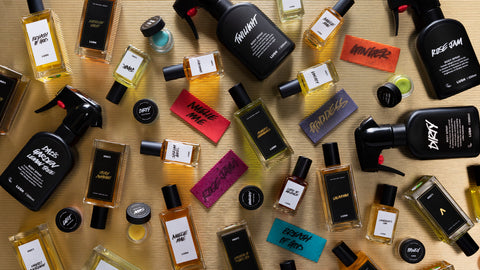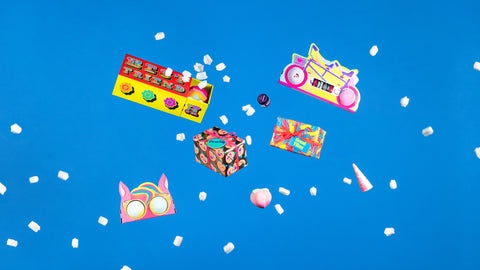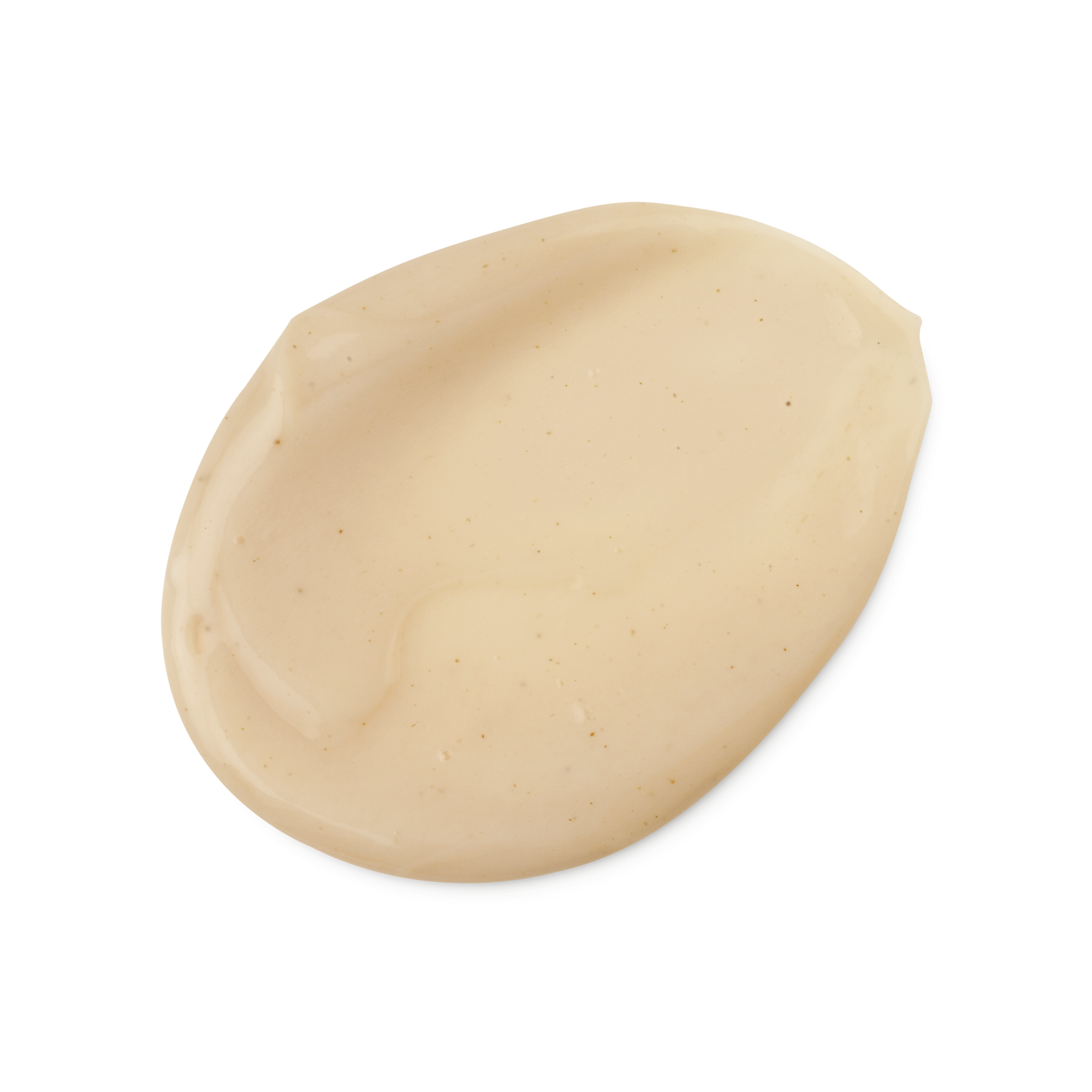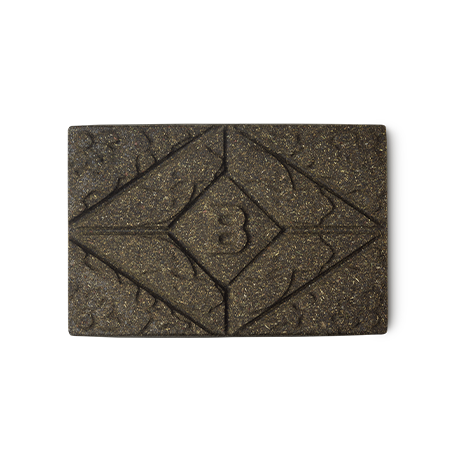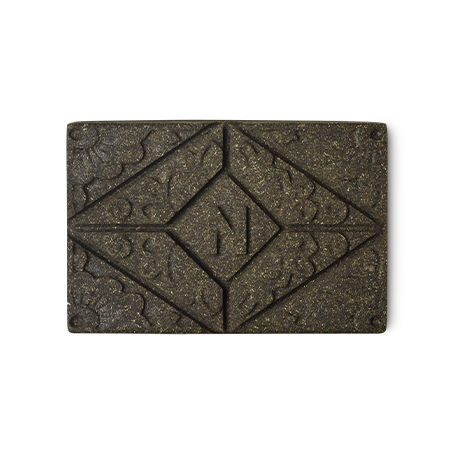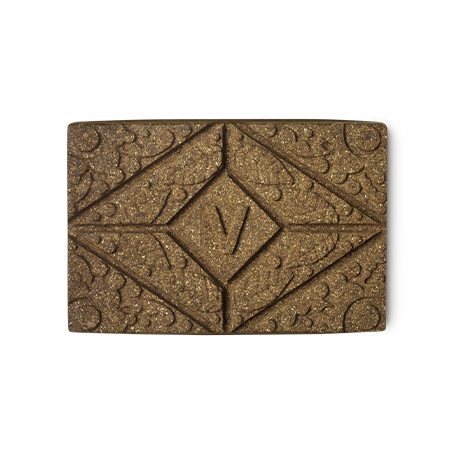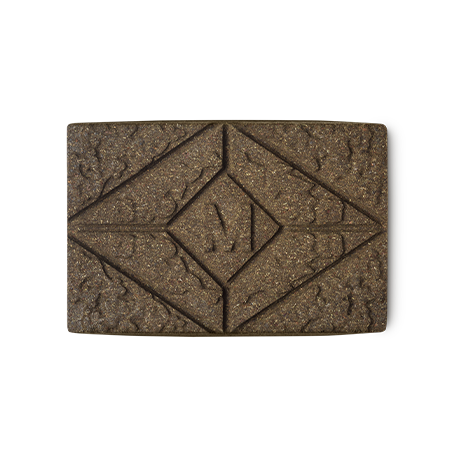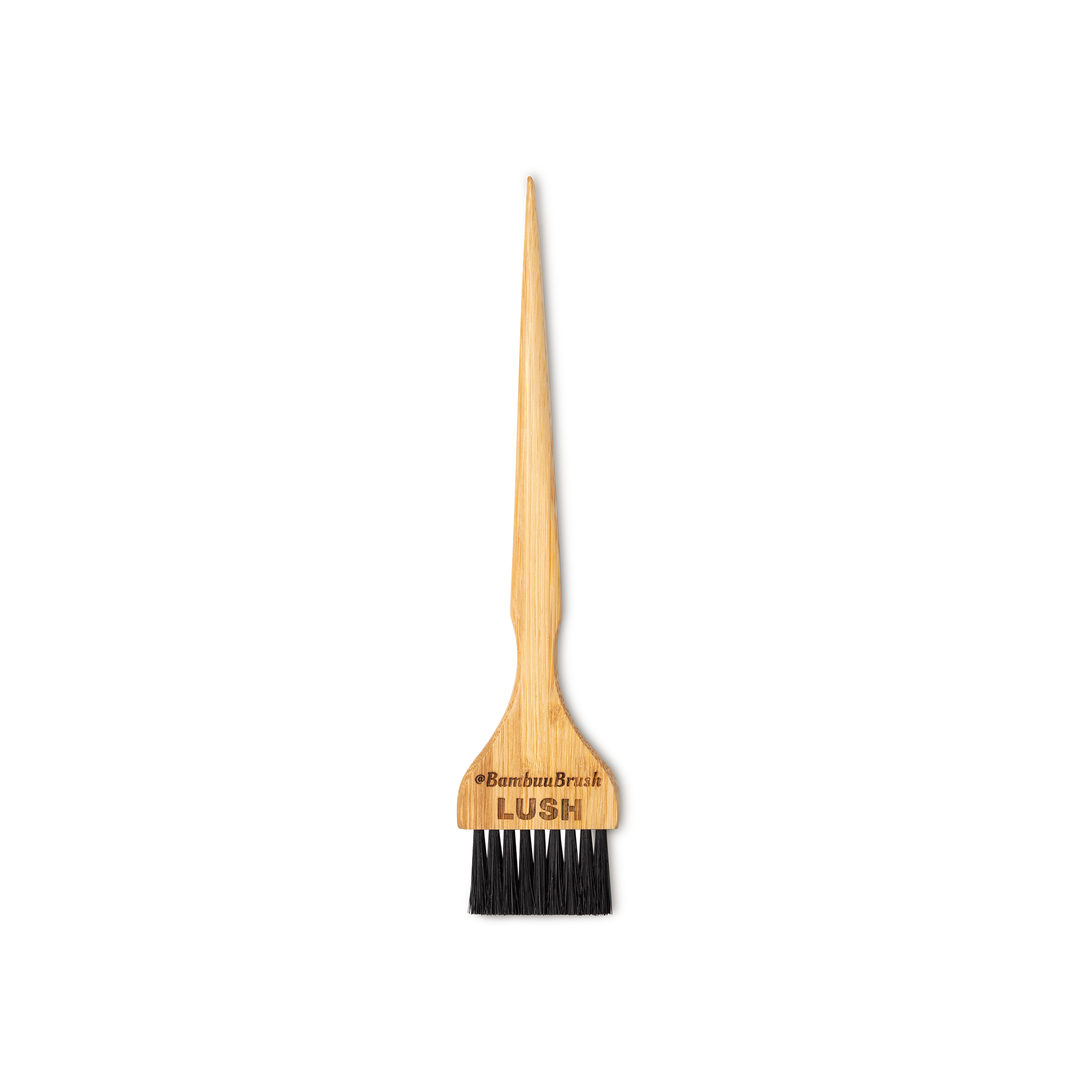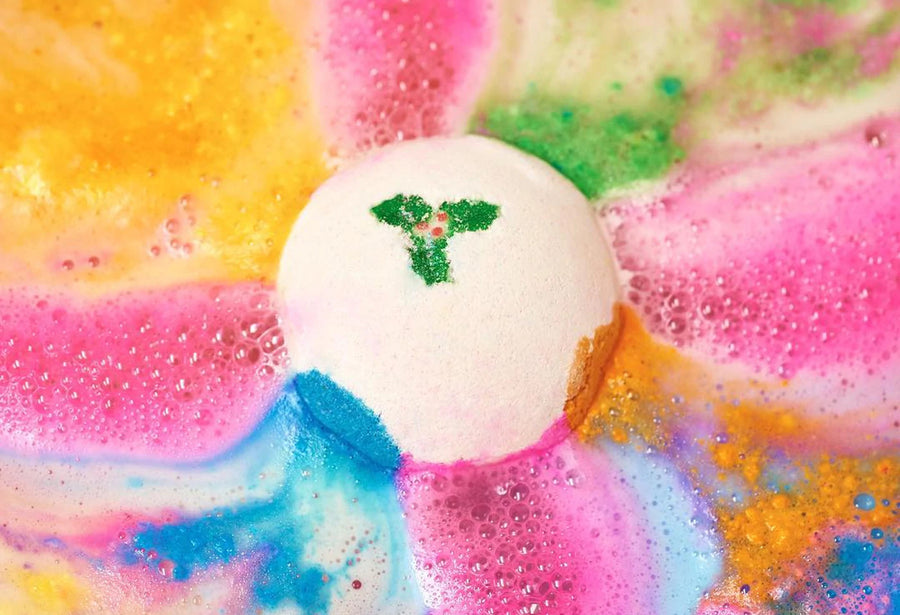Subtotal: 0.00 PHP

Let's talk about henna
For permanent colour that protects the hair, look no further than nature.
Henna’s not just the hippie colour your mum experimented with in the 70s. It’s the choice of organic hair dye for anyone who wants colour, gloss and vibrance, without the chemicals. Draw up a chair, grab a brew and get the lowdown on natural hair dye, right here, right now.
Here’s some frequently asked questions, answered:
What is henna?
Henna is a plant native to the Middle East that has been used to decorate the hair and body for thousands of years. Lush Henna blends the finest Persian henna with Fair Trade cocoa butter and ingredients like indigo herb and fresh organic lemon juice to create bricks of organic hair dye. They’re simple to use and give wonderful, lustrous colour. Every shade available - fiery Rouge, chocolatey Brun, autumnal Marron and dark Noir - promotes shine and condition as henna coats hair in a protective layer, like varnish.
How do you use henna?
Applying henna can get a little messy, so getting a friend to give you a hand is, well, pretty handy (but going solo is fine too). Choose an area where you are going to apply henna and lay down some newspaper to catch any stray spills. Then:
- Smooth a protective balm like Ultrabalm around the hairline - or beard line - to ensure your skin is not accidentally tinted.
- Break your henna block into chunks and place into a bain-marie or heatproof bowl over a saucepan of hot water. Cover the henna with boiling water and stir until the mixture resembles melted chocolate. The hotter the henna, the better the results.
- Wearing rubber gloves, apply the henna evenly to clean, dry hair; dry hair allows the butters and colour to saturate each strand. For best results, work from the roots to the tips, starting from the back of the hair and moving towards the front. Ensure the henna stays comfortably hot in a bain-marie or saucepan.
- Leave for at least one hour; up to two hours is recommended. Wrapping your hair in cling film or a shower cap will result in redder shades, whereas leaving it unwrapped (and therefore cooler) will create darker colour. Rinse off your henna with shampoo. The colour will continue to develop for up to 24 hours (and up to 48 hours if you’re using Brun or Noir).
For full instructions, head over to the How to use henna guide.
Is henna permanent?
Yes, henna does not wash out although it will gradually fade over time. Because of this, and because the dye works like a varnish over your natural hair colour rather than chemically changing it, emerging roots are far subtler than after using alternative synthetic dyes.
How does henna work?
Your hair is made up of two or three layers, depending on genetics. The outer, protective layer is called the cuticle and is composed of flat cells which overlap like the tiles on a roof. The cuticle protects a layer called the cortex in which your hair colour is formed. Some people also have a layer in the centre called the medulla, however not much is known about this layer or its purpose.
Chemical colours penetrate the cuticle and enter the cortex to change the colour of your hair. This can cause the layer of protective cells on your cuticle to become disjointed, making it difficult for sebum to travel down and hydrate the ends of your hair.
Unlike synthetic, chemical dyes, henna works on the cuticle which adds a further protective layer. Hairdressers sometimes worry about commercial henna options as they can contain metallic salts or chemicals dye, but every shade you'll find at Lush is 100% natural with ingredients specifically chosen to nourish the hair.
Do you need to do a strand test?
Yes. Always do a strand test because each shade of hair is different and so all results will vary.
Can you use henna on fair hair?
Yes, be prepared for a beautifully vibrant result! Applying a coat of Rouge first is advised to give your hair a red base and prepare it for a darker shade. Marron, Brun and Noir contain indigo, a blue dye which encourages darker tones in the hair. Applying a layer of Rouge first creates a colour-balancing base for these dark, cooler tones. Your desired henna colour can then be applied on top of dry hair as soon as you like. Indigo dye takes three days to fully oxidise after which you will see the finished effect.
What effect will henna have on very curly or afro hair?
The overall result will depend on your hair colour and how thoroughly you apply your henna: curly or afro hair may need more henna and more time, depending on the length. Curly hair drinks up henna much more quickly than straight hair because the kinks open the cuticle slightly, meaning it tends to be more thirsty. Adding a little more water to your henna makes application easier; if you have straight hair, stick to a thicker henna mixture as this will adhere to hair more easily.
Does henna cover grey hair?
Using henna on grey hair should be approached in a similar way to colouring blonde hair. This is because ‘grey’ hair is an impression made of a mix of hair that contains no colour and coloured hair.
Again, it is advised that Rouge is applied first before applying further layers to the reach the desired colour. Grey hairs will not normally be entirely covered by henna but will take on a naturally highlighted effect by the treatment. As always, do a strand test first.
Do you need to wait before using henna again?
No. The more times you use henna the more of each hair strand is covered with the henna particles gripping onto the cuticle of the hair. This means you can henna your hair as often as you like. Monthly will keep your colour beautifully bright.
Can you add ingredients to henna?
Yes, but the hard work’s been done for you! The patented recipe of the henna blocks you’ll find at Lush already combines Fair Trade, 100% traceable cocoa butter with natural dyes including red henna and indigo herb, as well as beneficial ingredients such as clove bud oil (known for its stimulating effect on the scalp).
In Rouge and Marron henna blocks, you’ll also find ingredients like fresh organic lemon juice to add shine to the hair and reduce brassy, orange tones. In Brun and Marron, ground coffee helps to improve the brunette shades and promote glossiness.
Does henna have an effect on dark hair?
This will depend on the colour used. Henna will have less effect on very dark hair, except to make the colour incredibly glossy and shiny, but brunettes and redheads will notice a difference if they pick a shade darker than their natural hair or use Rouge. Henna can be used on darker hair as a nourishing treatment and layered to create incredible shine.
Can you use henna with chemical colour?
You can use henna after using chemical colour. If you’re using chemical colour after a henna treatment though, you should wait for around four week (or until there is a noticeable fading of the henna). This is because henna acts as a varnish around the cuticle and will block the chemical treatment from entering the cortex to change the colour or shape of your hair. For this reason, perming treatments may also be less successful immediately after a henna application.
